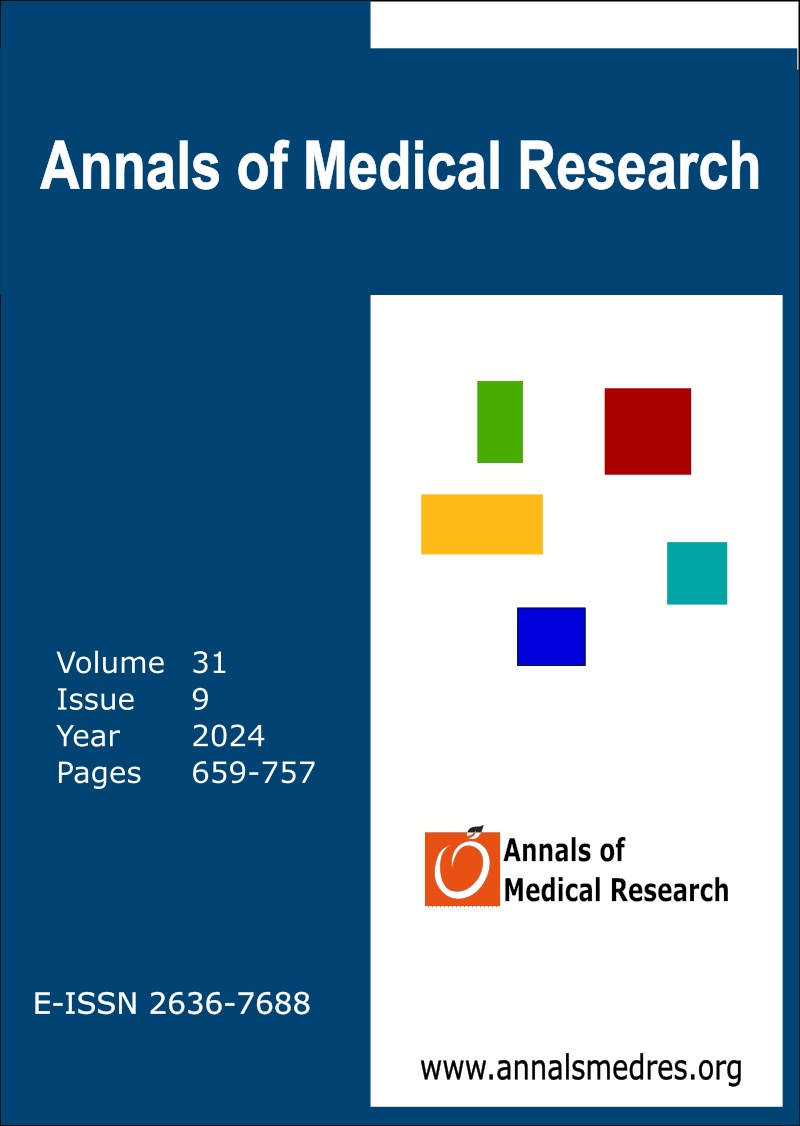The association of anal sphincter morphology and somatotype characteristics with the pathogenesis of hemorrhoidal disease
Main Article Content
Abstract
Aim: This study aims to evaluate the changes that may occur in the morphology of the anal sphincter muscles in hemorrhoidal disease. The relationship between the somatotype features of individuals and the disease was also evaluated.
Materials and Methods: The study was conducted with 76 stage IV hemorrhoidal disease patients and 75 controls. Internal (IAS) and external (EAS) anal sphincter muscle thicknesses were measured at the middle anal canal level, and in four quadrants (anterior, posterior, right, left), puborectalis muscle thicknesses were measured at the upper anal canal level and in two quadrants (right, left) by using 3D-endoanal ultrasonography (3D-EAUSG). Anal triangle dimensions were measured with a digital caliper and the area was calculated with the relevant formula. The somatotype features were determined using the Heath-Carter formula.
Results: It was observed that the external anal sphincter muscle thicknesses were higher in the right and posterior quadrants of the patients compared to the control group. The internal anal sphincter muscle thicknesses were thicker in the right and anterior quadrants in the patient group. Somatotype features of individuals in the patient and control groups were similar.
Conclusion: The thickening in some quadrants of the anal sphincter muscles in the patient group can be considered a result of hemorrhoidal disease. However, the fact that there is no difference the mean value cannot confirm its relationship with the disease. Therefore, it can be concluded that individual somatotype differences do not affect pathogenesis of hemorrhoidal disease.
Downloads
Article Details

This work is licensed under a Creative Commons Attribution-NonCommercial-NoDerivatives 4.0 International License.
CC Attribution-NonCommercial-NoDerivatives 4.0

